Camping is an amazing way to spend quality time with family and friends. It gives you a chance to escape the hustle and bustle of daily life and connect with nature. However, packing for a camping trip can be quite overwhelming, especially when it comes to storage.
Having proper storage solutions is essential for a successful camping trip. It not only helps you stay organized but also makes your camping experience more enjoyable. In this document, we will discuss some creative and practical storage ideas to make your next camping trip a breeze.
The Importance of Efficient Camping Storage
As mentioned earlier, having proper storage solutions is crucial for a successful camping trip. Here are some reasons why efficient camping storage is essential:
- It saves space:
When going on a camping trip, space is always limited. You need to pack all your supplies and equipment in a confined area like a car or a tent. Efficient storage ideas can help you maximize the limited space available and make room for other important items.
- Keeps things organized:
Imagine going on a camping trip and constantly struggling to find your essentials like a flashlight or sunscreen. Messy packing can lead to frustration and ruin the overall experience. With proper storage solutions, you can keep all your items organized, making them easily accessible whenever needed.
- Protects your belongings:
Camping often involves outdoor activities and unpredictable weather conditions. Proper storage solutions can protect your belongings from getting damaged or ruined by rain, dust, or other elements.[1]
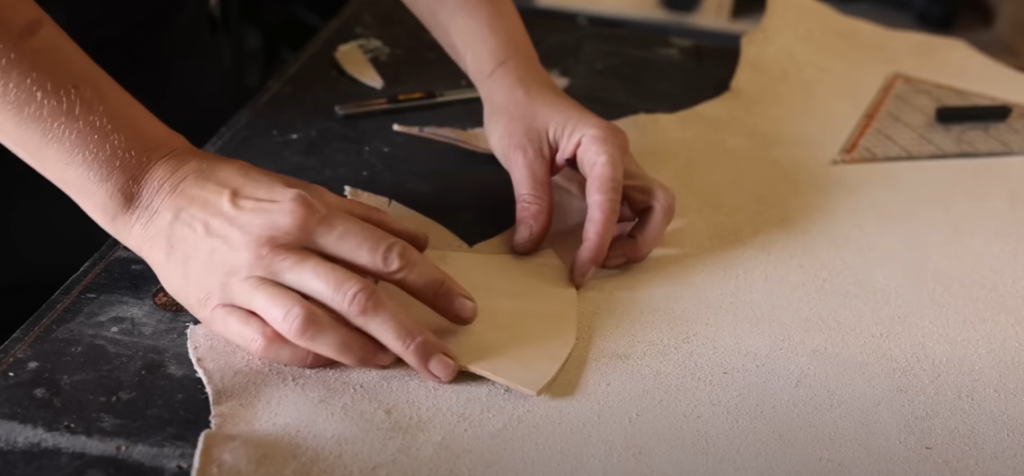
Essential Camping Storage Containers
Before we dive into specific storage ideas, let’s take a moment to discuss the different types of camping storage containers you will need. Having the right containers can make a world of difference when it comes to organizing your camping gear and making the most of your outdoor adventure. Here are some essential ones to consider:
- Plastic bins or tubs: These versatile storage containers are perfect for storing larger camping essentials such as cooking utensils, pots and pans, and non-perishable food items. With their sturdy construction, they can withstand the rigors of outdoor use and keep your gear protected from the elements.
- Duffel bags: When it comes to packing clothes and other soft items, duffel bags are an excellent choice. These bags are lightweight, making them easy to carry, and their flexible nature allows them to fit into tight spaces in your camping setup. Whether you’re packing extra layers for chilly nights or storing your camping towels, duffel bags provide a convenient and space-saving solution.
- Coolers: Keeping your perishable food fresh during your camping trip is essential, and that’s where coolers come in. These insulated containers are designed to maintain low temperatures, ensuring that your food stays safe to eat. Whether you’re packing meat for grilling, fresh produce for salads, or beverages to keep you hydrated, a reliable cooler is a must-have for any camping adventure.
- Storage bags or pouches: To keep your smaller camping essentials organized and easily accessible, storage bags or pouches are a great addition to your camping gear. These handy containers are perfect for organizing items like toiletries, a first aid kit, and other essentials that you need quick access to. With their multiple compartments and compact design, storage bags or pouches make it easy to find what you need when you need it.[1]
By considering these different types of camping storage containers, you can ensure that your gear is well-organized, easily accessible, and protected during your outdoor escapades. Happy camping!
Food Storage Solutions
Food is an essential part of any camping trip, but storing food while camping can be a challenge. Here are some food storage solutions to make your meals in the great outdoors more convenient:
- Pack ingredients in individual portions: Instead of carrying large containers for your ingredients, pack them in individual portions using resealable plastic bags or small containers. This way, you only take the amount you need, and it saves space in your cooler.
- Use frozen water bottles: Instead of using ice packs to keep your food cold, freeze water bottles and use them as a cooling agent. This way, you can stay hydrated while keeping your food fresh.
- Hang a storage net: A storage net hung above your cooking area is an excellent solution for storing fruits, veggies, and other non-perishable items. It keeps them off the ground, keeping them safe from critters.
- Invest in a collapsible cooler: Collapsible coolers are perfect for saving space when packing for a camping trip. They can easily be folded and stored away when not in use, making them ideal for longer trips where you’ll need to bring back souvenirs.[1]
With these food storage solutions, you can enjoy delicious meals while camping without worrying about your food spoiling or taking up too much space in your camping setup.
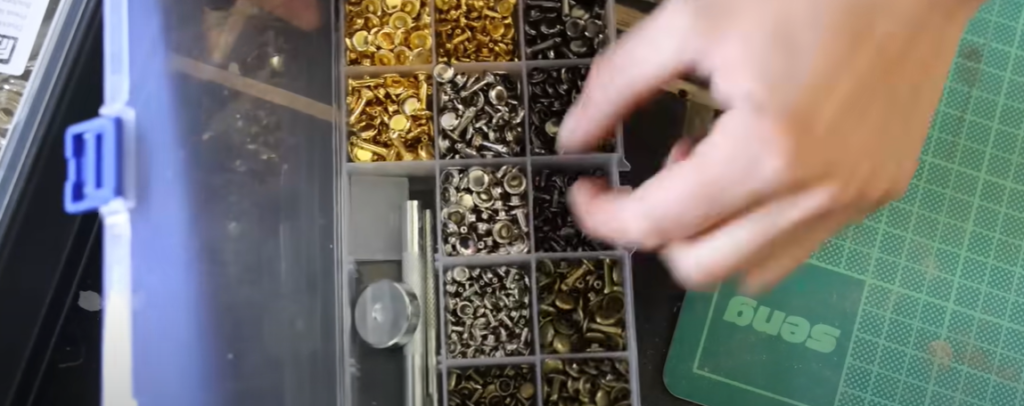
Camp Kitchen Organization
A well-organized camp kitchen can make meal preparation a breeze and free up space for other activities. Here are some tips for organizing your camp kitchen:
- Use a hanging pantry: A hanging pantry is a convenient way to store all your kitchen essentials like pots, pans, utensils, and spices. It keeps them off the ground and easily accessible.
- Utilize multi-purpose items: When packing for a camping trip, it’s essential to be space-efficient. Consider bringing multi-purpose items like a cutting board that can also function as a dish or a pot lid that doubles as a frying pan.
- Create designated cooking and cleaning areas: By designating specific areas for cooking and cleaning, you can keep your campsite organized and prevent cross-contamination between food and cleaning supplies.
- Plan your meals ahead of time: Before heading out on your camping trip, plan out your meals and their ingredients. This way, you can pack only what you need and avoid bringing excess items that will take up unnecessary space.[1]
With these camp kitchen organization tips, you can save time and hassle when preparing meals during your camping adventure.
Clothing and Gear Storage
Staying organized with your clothing and gear can be a real challenge while camping, especially with limited space. Here are some helpful and practical storage ideas that will ensure everything is neatly arranged and easily accessible:
- Use hanging organizers: Hanging organizers with multiple compartments are not only great for storing smaller items like socks, underwear, and accessories, but they also help maximize vertical space. Hang them inside your tent or on a nearby tree for easy access to your essentials.
- Utilize mesh bags: Mesh bags are versatile and perfect for storing various items during your camping trip. They are particularly useful for storing dirty laundry, wet towels, or muddy shoes. The mesh material allows for air circulation, preventing unpleasant odors and keeping your gear fresh.
- Pack in layers: When packing your clothing and gear, consider packing in layers. Start with the items you’ll need first on top, such as your sleeping bag, pajamas, or toiletries. This way, you won’t have to dig through everything to find what you need, saving you time and effort.
- Create a designated gear area: To maintain organization throughout your camping adventure, designate a specific area for your camping gear. This can be a separate tent or tarp where you can keep items like backpacks, hiking boots, cooking equipment, and other outdoor essentials. Having a dedicated spot for your gear will make it easier to locate and keep everything in its rightful place.[1]
By implementing these storage ideas, you’ll be able to enjoy a clutter-free and well-organized camping experience, allowing you to focus more on the joys of nature and outdoor exploration.
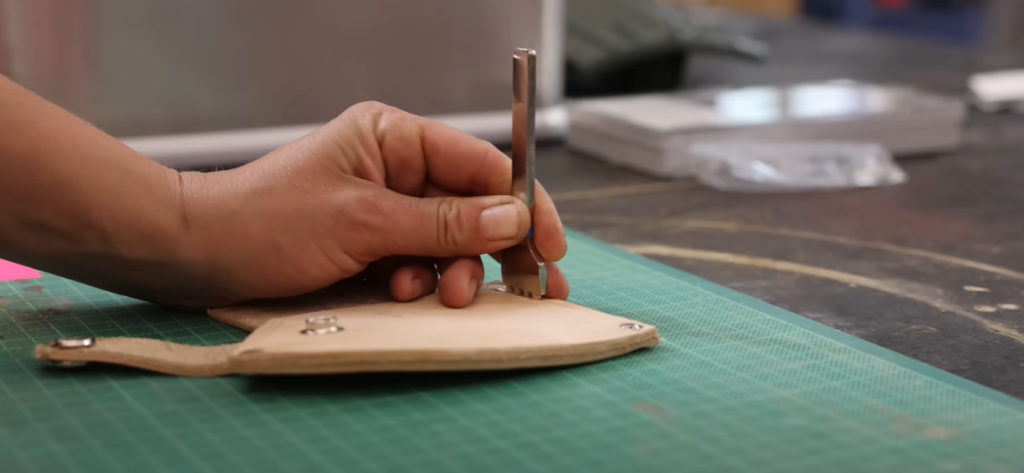
Tent and Sleeping Gear Storage
Proper storage of your tent and sleeping gear is essential for preserving their quality and ensuring a comfortable camping experience. Here are some tips for storing these items properly:
- Air out your tent: After each camping trip, make sure to air out your tent before packing it away. This will help remove any moisture that may have accumulated during use, preventing mold and mildew growth.
- Pack sleeping bags in a compression sack: Instead of folding your sleeping bag, consider using a compression sack to save space and protect your bag from damage. These sacks are designed to reduce the size of your sleeping bag without causing any harm to its insulation.
- Roll rather than fold: When packing up your tent or tarps, opt for rolling rather than folding. This helps prevent creases and damage, making it easier to set up your tent the next time you use it.
- Utilize storage bins: Storage bins are an excellent option for keeping your sleeping gear organized and protected. They provide a secure and waterproof solution for storing tents, tarps, sleeping bags, and other camping essentials when not in use.[3]
By following these tent and sleeping gear storage tips, you’ll be able to prolong the life of your camping equipment and have a stress-free setup every time.
Campsite Organization Hacks
Here are some additional hacks to help you stay organized and make the most out of your campsite experience:
- Use an over-the-door shoe organizer: Hang an over-the-door shoe organizer on a nearby tree or inside your tent. This nifty storage solution allows you to neatly store small items like flashlights, bug spray, sunscreen, and other camping essentials. No more searching through cluttered bags!
- Create a DIY wash station: Enhance your camping hygiene by bringing a large water jug with a spout and attaching a small bar of soap. This simple setup allows you to create a makeshift handwashing station, perfect for cleaning up before and after meals. It’s a convenient way to maintain cleanliness and keep your campsite fresh.
- Utilize bungee cords for secure storage: Keep your belongings in place during transportation and at the campsite by using bungee cords. Wrap them around your cooler or storage bins to secure any loose items on top, such as paper towels, utensils, or extra bags. This practical hack ensures that everything stays organized and easily accessible.
- Label your storage bins for easy retrieval: Save time and effort by labeling your storage bins with their contents. This simple step helps you quickly locate specific items without rummaging through multiple bins. Whether it’s cooking utensils, extra blankets, or camping gear, you’ll know exactly where to find what you need.[3]
By incorporating these useful hacks into your camping routine, you’ll be able to maintain a tidy and efficient campsite, making your outdoor experience more enjoyable, stress-free, and memorable.
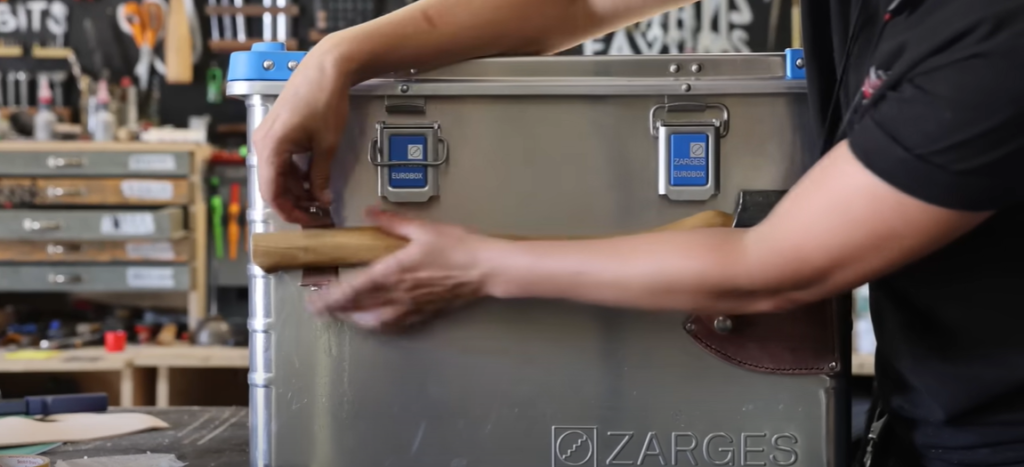
Outdoor Gear Storage
Aside from camping gear, you may also have other outdoor equipment that needs to be stored properly. Here are some tips for organizing your hiking, fishing, and other outdoor gear:
- Utilize hooks: Hang hooks in your tent or on nearby trees to store items like lanterns, backpacks, hats, or jackets. This will keep them off the ground and easily accessible when needed.
- Use carabiners: Carabiners are versatile and can be used to hang various items like water bottles, cooking utensils, or keys. Attach them to your backpack or belt loops for easy access to essentials while hiking.
- Create a DIY drying rack: If you plan on fishing or participating in water activities during your camping trip, bring along a clothesline and some clothespins to create a makeshift drying rack. This will come in handy for drying wet gear, towels, or clothes.
- Utilize storage compartments: Many outdoor backpacks come equipped with multiple compartments and pockets. Take advantage of these to keep your gear organized and easily accessible while on the go.[3]
By implementing these tips for storing your outdoor gear, you’ll be able to keep everything in good condition and make the most out of your outdoor adventures.
Campfire and Cooking Equipment Storage
Proper storage of your campfire and cooking equipment is crucial for fire safety and preventing any damage to your gear. Here are some tips for organizing this essential camping gear:
- Use a designated cookware bin: Keep all your pots, pans, and cooking utensils in one designated bin to avoid losing or misplacing any items.
- Store matches in a waterproof container: To ensure your matches stay dry and usable, store them in a waterproof container. This will come in handy during wet weather or if you accidentally drop the container in water.
- Create a firewood storage area: Designate an area for storing firewood, preferably away from your tent and any other flammable materials. Keep it covered to protect it from rain or moisture.
- Use a mesh laundry bag for dishwashing: Instead of using disposable plates and utensils, bring along reusable ones and use a mesh laundry bag to store them after washing. This not only saves space but also prevents any leftover food or debris from attracting animals.[2]
By following these tips, you’ll be able to have a safe and organized campfire cooking experience, making your outdoor meals more enjoyable.
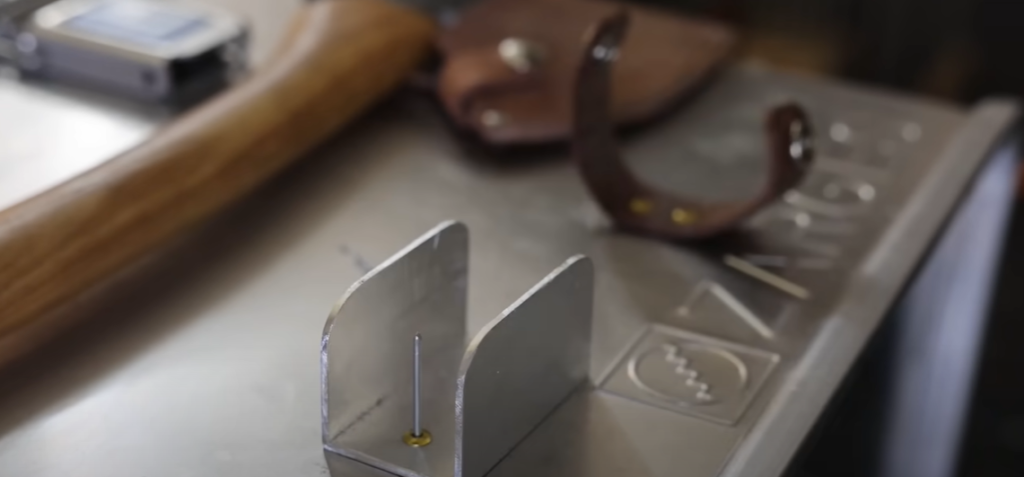
Packing and Unpacking Efficiency Tips
Lastly, here are some general tips for efficiently packing and unpacking your camping gear:
- Create a checklist: Before each trip, take the time to make a detailed checklist of all the essentials you’ll need. This will not only ensure that you don’t forget anything important, but it will also serve as a helpful reference when repacking after your trip. You can simply tick off items as you pack them, giving you peace of mind that you have everything you need.
- Pack in order of use: When loading your car or backpack, consider packing your items in the order that you’ll need them. By doing so, you’ll save yourself from the frustration of digging through your entire bag to find something that you need, especially if it’s buried at the bottom. This way, you can easily access the items you need as you progress through your camping adventure.
- Repack as soon as possible: After returning from your camping trip, it’s recommended to unpack and repack all of your gear as soon as you can. This proactive approach ensures that you’re always prepared for your next outdoor adventure. Plus, by repacking promptly, you’ll save valuable time and effort when it comes to preparing for your next trip. It’s a simple task that can make a big difference.
- Keep your gear in a designated spot: Designate a specific area or storage unit for all of your camping gear. This creates a sense of organization and makes it easier to find and pack everything when you’re getting ready for your next trip. Having a designated spot for your gear also helps to protect and maintain your equipment, ensuring that it’s always in good condition and ready to go.[2]
By following these practical packing and unpacking tips, you’ll be able to save time, reduce stress, and have a truly enjoyable and hassle-free camping experience from start to finish. Happy camping!
DIY Camping Storage Solutions
If you’re feeling especially creative and looking to enhance your camping experience with some amazing DIY storage solutions, here are a few innovative ideas to try out:
- Create a hanging organizer using an old shower caddy or shoe holder. This clever storage hack allows you to keep your camping essentials within reach, neatly organizing items like toiletries, cooking utensils, or even small camping gadgets.
- Utilize PVC pipes and rope to design a portable camp kitchen that will revolutionize your outdoor cooking game. This versatile setup can be customized to fit your specific needs, providing ample space for storing cookware, utensils, and even a small portable stove.
- Don’t throw away those empty plastic containers! Instead, repurpose them as handy storage bins for smaller items such as spices, condiments, or toiletries. This eco-friendly solution keeps everything organized and easily accessible, ensuring you never have to rummage through your camping gear again.
- Maximize your campsite’s functionality by building a collapsible clothesline using bungee cords and a sturdy wooden dowel. This space-saving addition allows you to dry wet clothes or towels while keeping them off the ground, ensuring a clean and organized campsite.
- Need a clever way to store utensils? Look no further than your trusty cooler! Simply repurpose an old belt or strap to hang your utensils from the cooler handle. This convenient setup saves space and keeps your utensils easily accessible for those outdoor meals.[2]
With a little imagination and resourcefulness, you can create unique and tailored storage solutions that perfectly cater to your specific camping needs. So go ahead and embark on your next adventure fully equipped with these ingenious DIY camping storage ideas!
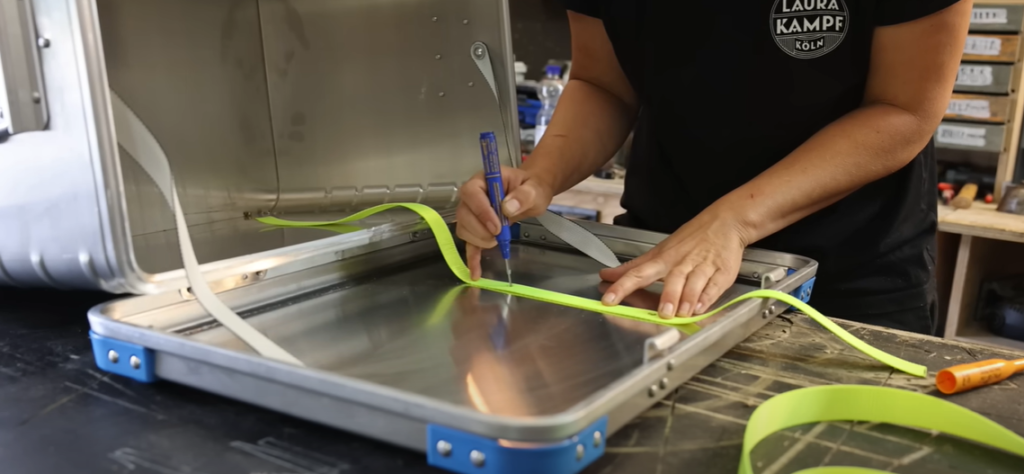
FAQ
How do you store clothes when camping?
When camping, it’s important to keep your clothes organized and protected from the elements. Here are some ways you can store your clothes while camping:
- Use packing cubes or compression bags to maximize space and keep items organized.
- Hang clothing on a portable clothesline or rope using clothespins.
- Fold and store clothing in plastic bags or bins to protect them from moisture and dirt.
- Utilize the storage pockets inside your tent for small items of clothing.
- Hang a mesh laundry bag to store dirty clothes and prevent them from attracting animals.
Where do you keep camping stuff?
There are various ways to store your camping gear, depending on the type of equipment and your personal preferences. Some common options include:
- Using designated storage bins or containers for different categories of gear (e.g., cooking supplies, clothing, sleeping gear).
- Utilizing hanging organizers or shelves inside your tent.
- Storing items in the trunk of your car or in a rooftop cargo carrier.
- Keeping smaller items in a backpack while hiking and exploring.
Where is the best place to store a tent?
It’s best to store a tent in a cool, dry place away from direct sunlight and moisture. This could include a climate-controlled storage unit, garage, or closet. Make sure the tent is completely dry before storing it to prevent mold or mildew growth. It’s also helpful to store the tent loosely packed in its carrying bag, with poles and stakes stored separately.
Can I keep camping stuff in the shed?
Yes, you can store camping gear in a shed as long as it is well-ventilated and protected from extreme temperatures. It’s important to ensure that the shed is secure and waterproof to prevent damage to your gear. Additionally, make sure to properly pack and organize your gear in the shed for easy access and maintenance. Overall, storing camping items in a shed can be a convenient and practical solution, as long as proper precautions are taken.
Is it OK to stuff a tent?
It’s not recommended to stuff a tent when packing it away. Storing a tent tightly compressed can damage the fabric and seams, leading to tears or leaks. It’s best to loosely pack the tent in its carrying bag or lay it flat for storage. This ensures that the tent maintains its shape and integrity, prolonging its lifespan. Properly storing your tent also makes it easier to set up and use on your next camping trip.
What should you not put in a shed?
Some items that should not be stored in a shed include:
- Food or perishable items: These can attract pests and animals.
- Flammable materials: Keep these stored separately in a designated area to prevent fire hazards.
- Electronics: Extreme temperatures and moisture can damage electronics, so it’s best to store them indoors.
- Valuables: Sheds may not have the same level of security as your home, so it’s best to keep valuable items stored in a more secure location. Overall, it’s important to use common sense when deciding what to store in a shed and ensure that items are properly packed and protected for long-term storage.
Is it OK to put a tent away wet?
It’s not ideal to put a tent away while it is still wet. Moisture can lead to the growth of mold and mildew, which can damage the fabric and cause unpleasant odors. If possible, try to let your tent air dry before packing it away for storage. However, if you’re in a rush or camping in a rainy area, it’s better to pack away a slightly damp tent than to leave it set up and risk damage from prolonged exposure to moisture.
Useful Video: Make the most of your Storage Boxes – 3 Clever Camping Hacks!
Conclusion
Camping can be a fun and exciting adventure, but it’s important to keep your gear organized and protected. By utilizing these creative camping storage ideas, you can easily pack and store all your equipment while also maximizing space and functionality at your campsite. Whether you’re an experienced camper or new to the great outdoors, these tips will help make your next trip hassle-free and enjoyable. Happy camping!
References:
- https://www.campingforfoodies.com/camping-storage-ideas-for-clean-clutter-free-camper-organization/
- https://paddleabout.com/tent-camping-storage-ideas/
- https://www.takethetruck.com/blog/camping-storage-ideas

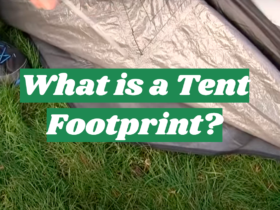

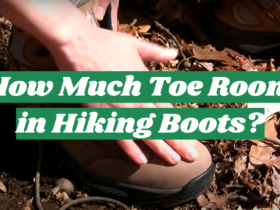

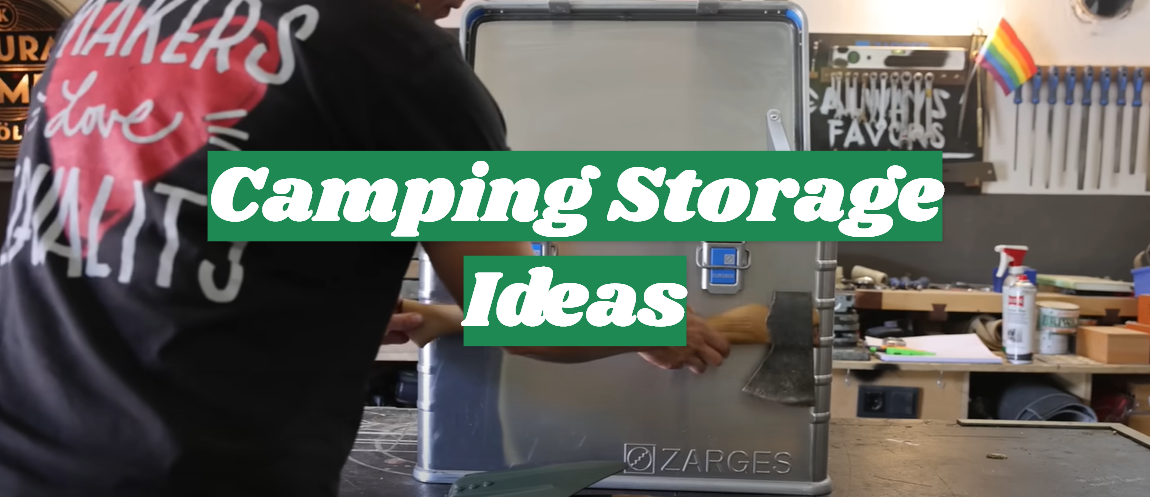
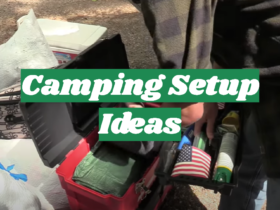
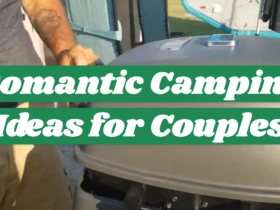
Leave a Review